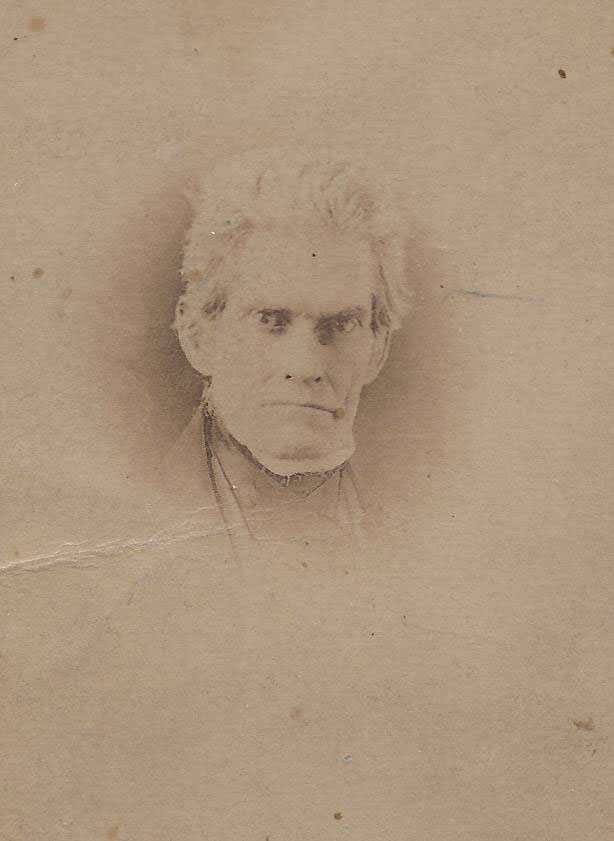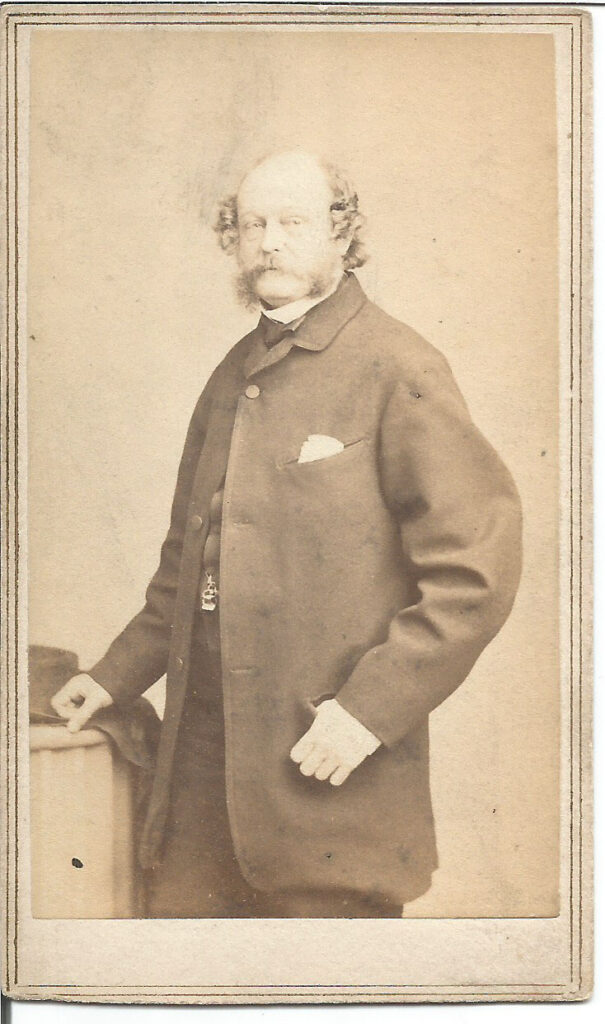Section #12 - Southerners are alarmed by an apparent Northern wish to ban all blacks from the new West
Chapter 141: A Host Of Splinter Groups Threaten Party Unity
1848
The Southern Fire-Eaters
Despite efforts by the two major political parties to achieve unity in 1848, both conventions end with a host of angry delegates looking for alternative policies or candidates.
On the Democratic side, the Southern Fire-eaters are particularly dismayed by the results on May 22 in Baltimore.
In response to the devastating threat inherent in the Wilmot Proviso, they are left with a Northerner, Lewis Cass, heading the ticket, and “popular sovereignty” as their best hope for expanding slavery into the west.

This is not enough for the likes of William Yancey of Alabama, the Virginians, Robert Hunter and James Mason, Jefferson Davis of Mississippi, David Atchison of Missouri, and others who now join John C. Calhoun in the search to defend their wealth and way of life.
Together they begin to really dig in behind the “legal guarantees” they see in the 1787 Constitution, especially the right of citizens to transport their “property” (in slaves) to all new territories and existing states.
This assertion will become a central part of their expansion strategy for the west – to establish the presence of slaves on the land in advance of any attempts to ban their presence through legislative actions.
In addition to the economic threats, Southern Fire-eaters are galled by what they regard as increasing attacks on their personal integrity and values.
Constant goading by abolitionists like Garrison provoke sharp, often violent reactions, as do jibes in Congress from Anti-Slavery Society petitions and from provocateurs like Giddings of Ohio and Hale of New Hampshire, who openly refer to their region as the “Slavocracy.”
These attacks prompt the search for new rationales in defense of slavery.
Among these is the assertion that slaves in the South experience better treatment than white men and women working for wages across the North.
The (Northern) laborer must work or starve. He is more of a slave than the Negro because he works longer and harder for less allowance than the slave and has no holiday, because the cares of life with him begin when its labors end. He has no liberty, and not a single right.
Needless to say, this comparison is roundly rejected across the North, and the “free soil” movement is quick to respond, saying that it “dishonors” white men and the “dignity” of their labor.
1848
The Van Buren Loyalists

Other Democrats dissatisfied with the Cass-Butler ticket are the “Barnburners,” ready to bring down the party structure to have their own way.
Within this faction, the most outspoken are the Van Buren loyalists, including New Yorkers like Senator John Dix, Van Buren’s son, “Prince” John, and Governor Silas Wright, along with Senators John Niles of Connecticut, Thomas Hart Benton of Missouri, and the Massachusetts’s lawyer and political insider, Benjamin Butler.
These and others have still not forgotten the 1844 convention in Baltimore, supposedly destined to re-nominate ex-President Van Buren, who has devoted his entire life to building the Democratic machine.
Instead a carefully orchestrated anti-Van Buren campaign led by Southerners, including Andrew Jackson, and the ever ambitious Pennsylvanian, James Buchanan, eventually hands the nomination to the Tennessee slave-owner, James Polk.
This outcome is accompanied by fistfights on the floor and vows, especially by Van Buren’s son, that “scores would be settled” in due course.
The chance for retribution comes after the 1848 convention.
The personal animosities that prompt it are masked under a theme put forth by Dix and Niles – to the effect that the time has come for the Free States to assume “that control in the affairs of the government to which they are entitled.”
The key weapon in this counter-attack is, of course, Martin Van Buren himself.
“The Little Magician” may be sixty-six year old, but he will soon jump back into the political arena as one last shot at the presidency comes his way.
1848
The Wilmot Democrats
The other wing of the “Barnburner” faction is driven more by their commitment to the Wilmot Proviso banning slavery in the land acquired from Mexico, than to personal revenge for Van Buren.
Among this group are the two men most associated with introducing the amendment in the first place: David Wilmot from Pennsylvania, and Preston King, his house colleague, from New York.
But their reasons for backing the ban differ sharply.
Wilmot’s stated objective is to keep the new land free of plantation slavery in order to provide the best possible setting for white settlers to realize the American Dream.
For King, the goal is different. Along with Congressman Jacob Brinkerhoff of Ohio and Maine Senator Hannibal Hamlin, he regards the ban as an important step in ending the curse of slavery.
Ironically these two contrary streams of thought will soon flow together into the “free soil” movement.
1848
The “Conscience Whigs”

On the Whig side, the nomination on June 7 of another Southern slave-holder, Zachary Taylor, is beyond the pale for many delegates, most notably a contingent from Massachusetts who will go on to play key roles in the emancipation movement.
Their most vocal member is the thirty-seven year old Boston lawyer, Charles Sumner, a literally towering presence at six feet four inches. He graduates from Harvard, mingles with the New England intelligentsia, and enlists in the anti-slavery crusade in 1845 alongside Horace Mann, both trying to end school segregation.
Sumner is joined in his criticism of the Mexican War and of Zachary Taylor by two other Massachusetts men whose political careers to date have been limited to their home state legislatures.
One is Henry Wilson, impoverished as a child and self-educated, who apprentices as a shoemaker in Natick, before launching his own successful business manufacturing “brogans,” and then drifting into politics as a Whig. Known as the “Natick Cobbler,” Wilson dedicates his life to the abolitionist cause after witnessing slave families being broken apart and sold off to traders on a visit to Washington
The third key member of what becomes known as the Massachusetts’ “Conscience Whigs” is Charles Francis Adams, the only surviving child of President John Quincy Adams, and one who follows in his footsteps – from Harvard to politics to eventual diplomatic service and a lifelong dedication to wiping out the moral stain of slavery.
These “Conscience Whigs” are opposed in their home state by “Cotton Whigs,” conservatives aligned with Daniel Webster, among them ex-Governor Edward Everett, and Speaker of the U.S. House, Robert Winthrop. Together they fear that aggressive attacks on Southern slavery will threaten their local textile manufacturers and might lead to the break-up of the Union.
But for the “Conscience Whigs,” even passive support for Taylor is out of the question, and like the Van Buren Democrats, they will soon be drawn toward the “free soil” movement.
1848
The Devoted Southern Unionists

The Whig conservatives of Massachusetts are not alone in fearing that the two party conventions have failed to address the sectional conflicts over slavery amplified by the Mexican War.
Despite decades of political infighting, both Democrats and Whigs have always come together around Andrew Jackson’s famous 1830 toast/dictate during the Nullification crisis:
Our Union – it must be preserved!
Historically the burden to achieve this outcome has fallen on Henry Clay, the “Great Compromiser,” whose task has been to conjure up a sectional accommodation and then sell it to the hard core Northerner, Daniel Webster, and the Southerner, John C. Calhoun. By now, however, the stars of this “great triumphirate” are fading — with Calhoun about to be dead in March 1850, Clay in June 1852 and Webster in October 1852.
Still the impulse to Union burns bright in 1848 – and again it is the border state Whigs who take the lead.
They are championed by sixty-one year old John J. Crittenden of Kentucky and three other senior Whig Senators, all fifty-two years old – John Bell of Tennessee, John Clayton of Delaware, and Maryland’s Reverdy Johnson.
Joining them are younger House Whigs from the old South – two influential Georgians, Robert Toombs (38) and Alexander Stephens (36), and the Virginian, John Minor Botts (46).
Their challenge lies in reaching out on behalf of the Union to other Southern Democrats, especially those drifting toward the hard line positions of the Fire-Eaters, in order to protect their economic interests.
One of their key allies across the aisle will be Howell Cobb, a rising force in Democratic politics. Cobb is a Phi Beta Kappa graduate of the University of Georgia, a lawyer and a slave-holder, who is elected to the House in 1843 at age twenty-eight on his way to becoming Speaker in 1849 and then serving as Treasury Secretary under James Buchanan. For the next decade, Cobb will work tirelessly with the border Whig contingent to avoid Southern secession – before finally giving up in frustration.
1848
The Abolitionists And The Xenophobes
During this period of political turmoil and restructuring, two other factions hover outside the gravitational pull of the Democratic and Whig parties in 1848.
One group, the Abolitionists, are devoted to freeing the slaves and assimilating them into American society — although they too are now divided on how quickly and how best to make this happen.
The Garrison backers continue to reject political means in favor of grassroots activism, while the Liberty Party wing, now headed by Gerrit Smith and Salmon Chase, seek public office and new legislation.
The other floating group, the xenophobic Native American Party, is predicated on protecting the interests of white Protestants born in the United States.
To accomplish this end, they hope to stem the growing tide of immigrants coming into America in the 1840’s, while extending the naturalization timeline for recent arrivals. They also intend to place severe restrictions on all Roman Catholics already in the country, arguing that their loyalty is to the Pope and not to the Constitution.
Advocates within both camps hope to build a credible political party, but have had only narrow successes so far.
Their path to influence will demand that they attach themselves to a more mainstream movement in the end.